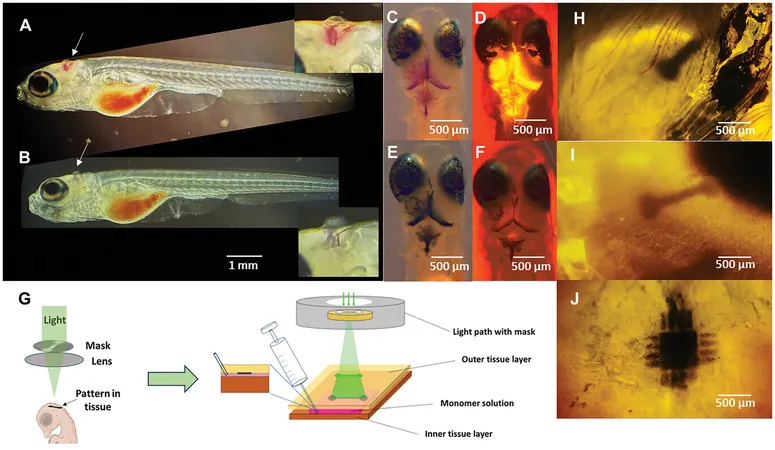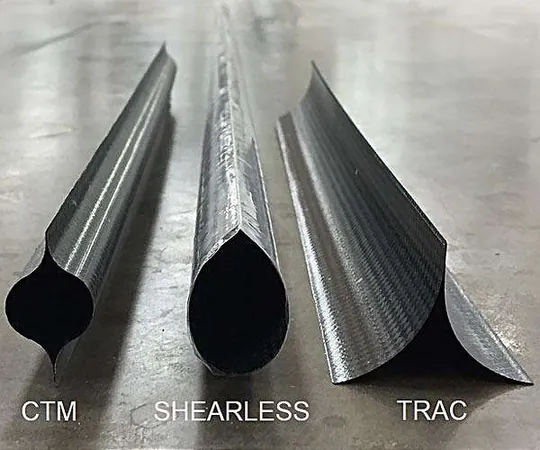
Revolutionary Light-Based Bioelectronics: A New Era for Medical Treatments?
2024-11-22
Author: Daniel
Introduction
In an exciting leap forward for the field of bioelectronics, researchers at Lund University in Sweden have developed an innovative method that allows for the creation of sophisticated bioelectronic implants directly within living organisms using light. As the field strives to enhance the treatment of diseases, this breakthrough could potentially change the landscape of medical therapies as we know them.
Research Highlights
Published in the esteemed journal Advanced Science, the study highlights how scientists employed a photopolymerization process that utilizes light to form electrically conductive materials in real-time within the body. Initial trials conducted on animals have yielded promising results, indicating a credible path forward in integrating technology with biology.
Current Limitations of Bioelectronics
Bioelectronics have already shown their potential in treating serious conditions such as heart arrhythmia, epilepsy, and neurodegenerative diseases like Parkinson's. However, current methods often necessitate that biological tissues adapt to rigid electrodes, sometimes resulting in inflammation, scarring, and other complications—particularly problematic in sensitive areas like the brain.
Expert Insights
Professor Roger Olsson, an expert in chemical biology and drug development at Lund University, notes the urgency in developing biocompatible solutions that harmonize with bodily tissues. "Our ambition is to create materials that can easily integrate into biological systems," he states, emphasizing the importance of this research in overcoming existing challenges in bioelectronics.
Innovative Methodology
Detailed in the research, the novel method employs light-sensitive materials that can be activated by blue, green, or red light. Within just five to thirty minutes, these materials rapidly transform into a soft, conductive hydrogel—a mixture of polymers and water, capable of conducting electricity and designed to mesh seamlessly with soft biological tissues.
Future Implications
Lead author Fredrik Ek elaborates, "This technique allows us to fabricate intricate bioelectronic structures directly within the tissues. Until now, this level of direct integration with living cells has not been achieved. The biocompatibility of the created structures makes them exceptionally conducive for regulating nerve signals, which could unlock new treatments for neurological and neurodegenerative conditions."
Minimally Invasive Nature
Perhaps most groundbreaking is the minimally invasive nature of these light-activated bioelectrodes. Unlike conventional implants that often require surgical procedures for insertion and removal, these new bioelectronics are designed to biodegrade naturally after fulfilling their purpose, reducing the need for additional surgeries and the risks associated with them.
Next Steps and Conclusion
Looking ahead, the researchers plan to conduct further studies beyond the initial trials in zebrafish and chicken embryos, with the aim of testing their innovative bioelectrodes in larger animal models. As the promise of bioelectronics continues to evolve, these developments offer hope for transformative treatments that align more naturally with our biological systems, paving the way for safer and more effective medical interventions in the future.
Could this breakthrough lead to a future where implants are not just tools, but a part of our biological makeup? Only time will tell! Stay tuned for the next chapters in this thrilling story of science and innovation.


 Brasil (PT)
Brasil (PT)
 Canada (EN)
Canada (EN)
 Chile (ES)
Chile (ES)
 España (ES)
España (ES)
 France (FR)
France (FR)
 Hong Kong (EN)
Hong Kong (EN)
 Italia (IT)
Italia (IT)
 日本 (JA)
日本 (JA)
 Magyarország (HU)
Magyarország (HU)
 Norge (NO)
Norge (NO)
 Polska (PL)
Polska (PL)
 Schweiz (DE)
Schweiz (DE)
 Singapore (EN)
Singapore (EN)
 Sverige (SV)
Sverige (SV)
 Suomi (FI)
Suomi (FI)
 Türkiye (TR)
Türkiye (TR)